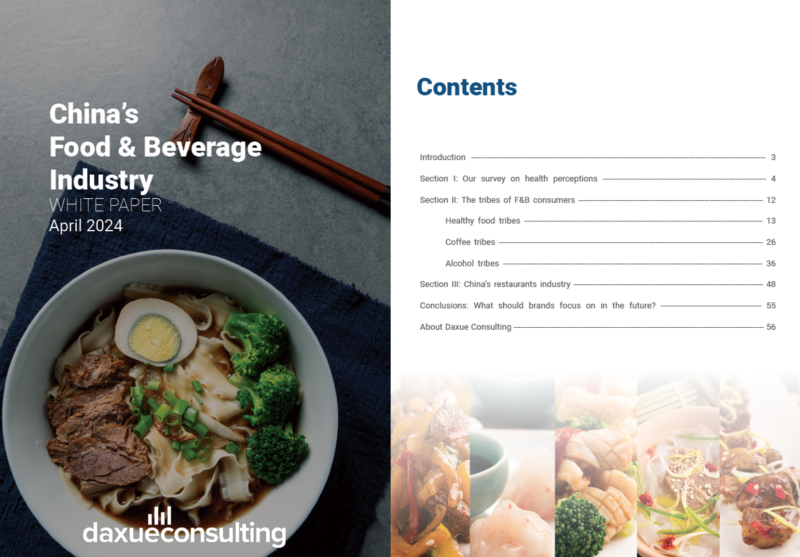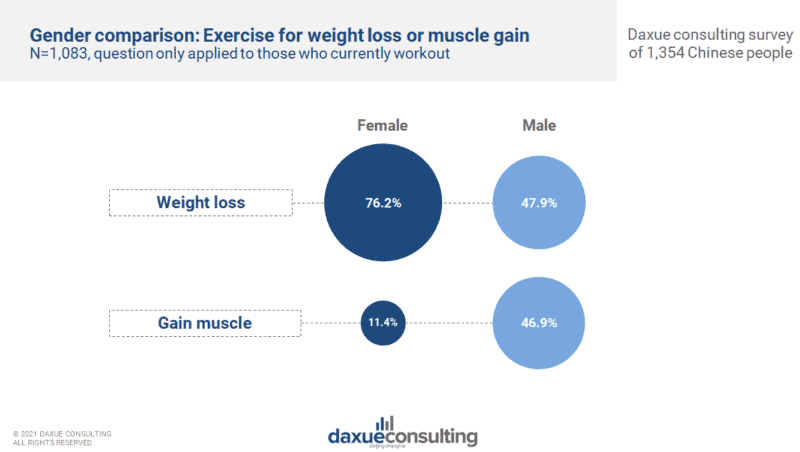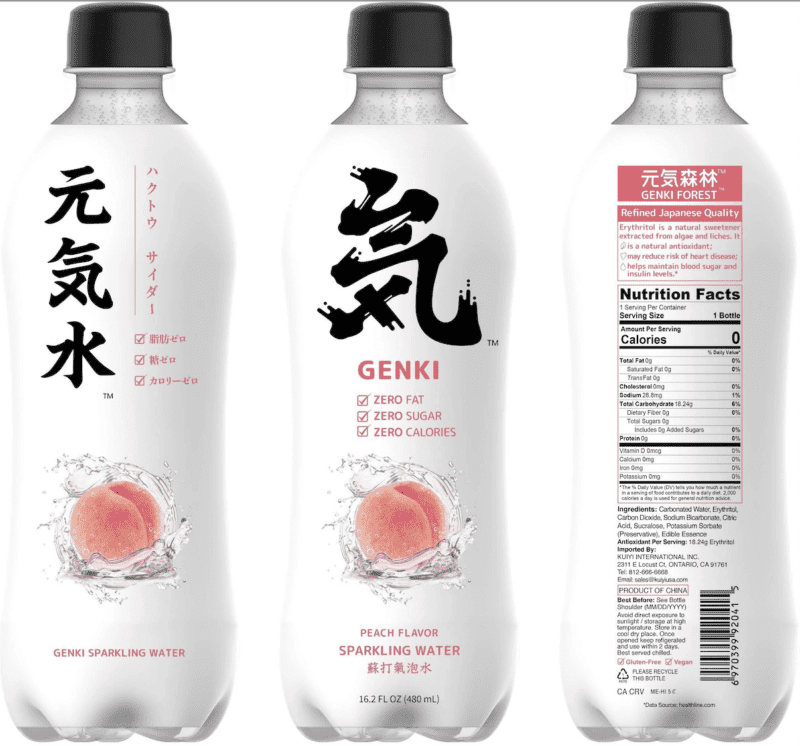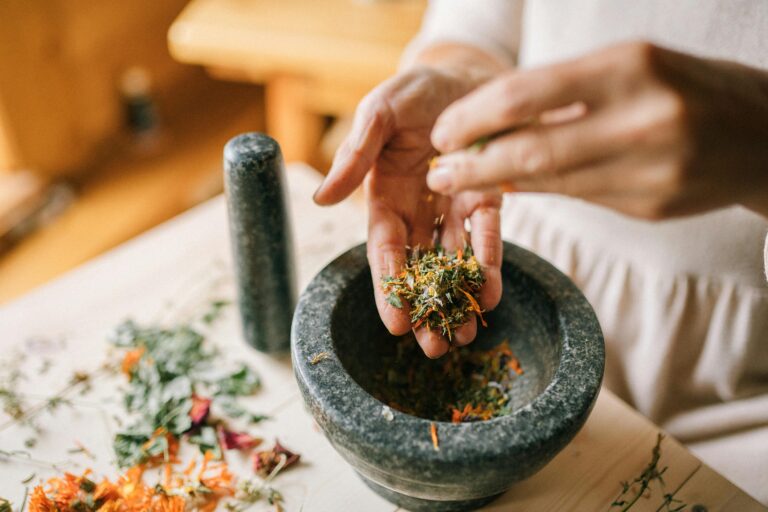Over half of Chinese adults were overweight in 2022. In combination with this statistic, the beauty standards in China are relatively unforgiving towards extra weight, with social discussion trends amplifying the public’s general awareness and anxiety over the issue. In 2022, 77% of Chinese netizens believed they had weight issues. Social media has driven interest in various weight loss products. As a result, China’s demand for weight loss remedies is rising quickly. But to penetrate China’s weight loss market, the question is how do Chinese people lose weight?
Download our China F&B White Paper

Chinese people are influenced by weight loss methods on social media and the beauty standards of celebrities. Live streamers providing their own weight loss products are getting popular as well. Many local and international brands tailor their products, such as low-cal food alternatives and meal replacements to target Chinese people eager to lose weight. Additionally, traditional Chinese medicine remedies such as acupuncture and teas have found their place among modern weight loss methods. With the recent regulatory thaw over the sale of Ozempic in China, the opening-up of another gigantic market is also within the anticipation of global pharmaceutical competitors, who have already started preparing.
How Chinese people lose weight on social media
Healthy eating – consumers explore various diets through social media
One of the most straightforward solutions to obesity is to eat healthily. Increasingly concerned with health risks related to different diet styles, Chinese netizens actively discuss strategies to improve their wellbeing on social media. Yet, as our China’s food & beverage industry white paper highlights, there is no single popular food or list of must-have foods. Instead, there are diverse tribes that unite around shared habits, tastes, and beliefs. Some of the notable diet tribes include those advocating intermittent fasting, organic diet, and Keto diet.
Not afraid to waste food
A popular post on Zhihu (知乎) – a Chinese question-and-answer platform – states that the most sustainable way to lose weight is to continue to eat one’s favourite foods, but with disciplined moderation. According to the suggestion, one should only eat the dish until the point whereby cravings subside. After such a point, the post recommends that the dish should be immediately thrown away to avoid further eating, thereby highlighting how losing weight for the Chinese can take priority over concerns such as food waste.
Controlling food eaten at social gatherings
As eating out in groups is a key feature of socialising among friends in modern Chinese society, netizens on Zhihu also provide advice to Chinese people on how to lose weight without giving up the joy of eating out. Those hoping to lose weight should fill up on healthy food at home before heading out for gatherings. This would then minimise overeating during the actual meal.
Some Chinese advise eating foreign cuisines to lose weight
In addition, Zhihu posts also advise people to make healthy choices cuisine-wise when choosing a location to eat out. Japanese, Western, and French food are perceived as healthier compared to Chinese cuisine because they are thought to contain fewer fat ingredients. According to our food & beverage industry white paper analysis, the trend of “white people food” (白人饭) took Chinese social media by storm, particularly on Xiaohongshu. Users posted photos of their lunches, often showcasing raw vegetables, bread, crackers, and cold cuts. While some viewed them as sad, others praised them for their perceived health benefits.
Such a mindset provides a possibility for foreign food and beverage brands to market themselves as weight-loss friendly option. Popular Beijing-born South American restaurant MOKA Bros already did it. MOKA has become a staple among young locals by serving wholesome, authentic food in a cozy, vibrant atmosphere.

Meal replacement & low-cal food
Although the concept of meal replacement in China is relatively new, the market is rapidly growing. Euromonitor International forecasts that the market will hit RMB 120 billion by 2022. Common products include instant smoothies, energy bars, and pre-cooked meals. These products often market to consumers who want to control weight through social media like Xiaohongshu. Mostly female influencers emphasize these products’ weight loss effectiveness and health benefits. According to a report by CBNData in 2020, women were the main consumers of meal replacements due to their larger demand for weight loss.

In addition, many companies introduced low-cal alternatives to regular food. For instance, VEpiaopiao specializes in low-cal sauces such as 0-cal salad dressing, spicy sauce, and chocolate sauce. The company replaces white sugar with sugar substitutes such as erythritol and reduces calories included to very low amount.
Fitness trends
The outbreak of COVID-19 has enhanced Chinese health awareness in recent years. According to our survey on fitness habits in China, 89.2% of people think exercise is of great importance to physical and mental health. Many, especially female participants, reported “losing weight” as the main driver of fitness.

Instead of going to gyms, many young consumers prefer to use fitness apps and watch fitness videos to work out at home while saving budget. Keep and Bilibili dominate the fitness app market for young Chinese. 72% of the surveyees say they often use Keep to stay fit, while 84.9% watched Bilibili. In 2021, Keep’s monthly active users reached 13.1 million.
Moreover, young Chinese love following fitness KOLs who post videos and tips on social platforms. For instance, Will Liu, a famous singer and actor, went viral after he started livestreaming his exercise routine on Douyin (the Chinese Tiktok). On April 17, 2022, his streaming on Douyin was viewed almost 14 million times, and his most successful live session exceeded 1.1 million viewers.
Traditional Chinese Medicine (TCM) methods for weight loss
Acupuncture
Acupuncture is a commonly used method for weight loss in China. For instance, acupuncture helps curb cravings, increase energy, and increase nutrient absorption. When the needles are inserted into certain vital points, they improve and restore the flow of life energy called “Qi”. According to Chinese medicine, “Qi” stagnation in certain areas of the body can cause weight gain.
Moreover, acupuncture can be used to attain a ‘V-shaped’ face. When needles are inserted into certain vital points on the face and ears, they can help get rid of fatigue and puffiness on the face. Several celebrities advertise acupuncture as a weight loss remedy on Chinese social media. For instance, Chloe Zhao, a Chinese actress and model, is known for relying on acupuncture on her face in order to achieve a slimming effect. Reactions from netizens have been mixed, with this method viewed as extreme and painful.

TCM weight loss food and beverages
TCM has a few ‘golden rules’ when it comes to weight loss. In TCM, food is divided into five elements: cold, cool, neutral, warm, and hot. Chinese people hoping to lose weight are supposed to avoid ‘cold’ and ‘damp’ foods. Such foods include those rich with refined sugars, baked foods, and dairy products.
Chinese people consider tea as a good weight loss tool. Beyond increasing body metabolism and allowing people to burn up to 10% fat, drinking about two cups a day of Oolong tea is believed to have system-cleansing properties according to TCM. Moreover, drinking tea before meals can aid in decreasing food cravings, whereas drinking tea after meals is regarded as limiting the body’s ability to absorb fat from food. Yet, Chinese youth trying to lose weight do not drink a lot of tea. In fact, certain domestic brands such as Farmer Spring (农夫山泉) and King of Teas (茶里王) have been unable to meet the taste preferences of young consumers.
Ozempic in China – weightloss drugs go viral on social media
Many Chinese people are experimenting with different ways to lose weight. Among them is Ozempic. Even though it was approved as an anti-diabetes ingredient in China in 2021, many netizens were already aware of it due to its popularity in other countries. However, they see it more for a “miracle drug” for weight loss than a treatment for diabetes.
Extreme ways Chinese people lose weight
Beauty standards set by celebrities
How Chinese people lose weight is also influenced by beauty standards set by celebrities. Popular reality TV show ‘Sisters who make waves’ (乘风破浪的姐姐) showcased a segment where a contestant on the show took out a scale to weigh her food and the amount of calories in it. She would only eat food which fell within a strict limit.
Hashtags: fitspo for Chinese people to lose weight
Extreme beauty standards are also pronounced on social media. Chinese netizens reflect on the society’s dominant conception of female beauty and summarise it as “pale, young, and thin” (白幼瘦). Such a beauty standard fuelled major trends, such as the ongoing hashtag “筷子腿” – literally translated as “chopstick legs” – show social media users posting photos of their ultra-thin legs which resemble chopsticks.
Another ongoing trend is the “BM style”, whereby “BM” is the alias for clothing brand Brandy Melville. Unlike in the USA, BM in China has in fact gained praise for being progressive by encouraging girls to show more skin instead of “hiding”.
Recently, however, the “pale, young, and thin” ideal has increasingly become a topic of controversy. On major social platforms like Xiaohongshu, netizens heatedly debate on whether such a conception of beauty dominant within China’s society is truly healthy. Among female netizens, though relatively rare, feminism-inspired critiques are challenging the social pressure of “aesthetic labour” (服美役), criticising those who conform to unfair social expectations. Despite significant resistance, they have been gradually gaining visibility in Chinese online spaces, signalling a slow but emerging shift toward broader definitions of beauty.
Selling weight loss products via livestreaming
Chinese people learn weight techniques via livestreaming too. Li Jiaqi, a well-known live streamer in China, used to sell weight loss-related products such as smart scales which enabled users to access specific body data such as their basal metabolic rate and body fat percentage, as well as low-cal sauces and snacks.
The wide selection weight loss products for sale in China shows local consumers are spoilt for choice when it comes to choosing weight loss methods. Therefore, even though there is fierce competition among products, Chinese consumers are open to try new remedies for losing weight.
How brands market to China’s ‘weight loss’ crowd
Genki Forest: utilizing natural sugar substitutes to cater to Chinese fit people
Genki Forest has become highly successful in becoming a staple drink for young Chinese people trying to lose weight. The company specializes in selling a variety of drinks, from sugar-free soft drinks to low-sugar milk-tea. In the first quarter of 2022, its revenue increased by 50% year-on-year- from 7.02 billion RMB in 2021.
Genki Forest is known for its aesthetically pleasing packaging with incorporated Japanese elements. It promotes a carefree and fulfilling manner of being health conscious and losing weight, all while being easy to integrate into the daily lifestyle of its consumers. This holistic approach has been credited as being key to Genki Forest’s marketing success. This is especially due to young consumers’ higher requirements for the products they consume, seeking not just taste, but also a sense of fulfilment.

Innocent Juice targeting health-oriented families
Building upon the strong juice market in China, Europe’s best-known smoothie brand Innocent has entered China in 2020. Innocent also uses cultural reference points from daily life in order to find entry points to remind consumers to stay healthy and drink Innocent. For instance, it drew a link between the cut fruits that Chinese parents commonly provide for their children as a gesture of affection, with presenting one’s parents with Innocent as a gift.

What social listening teaches us about how Chinese people lose weight
- Chinese social media are crammed with peculiar weight loss methods, such as throwing out the dish to avoid overeating and having a healthy snack before dining out to eat less.
- As health awareness spreads among Chinese young consumers, low-cal meal replacements gain popularity.
- Ozempic in China was approved as a treatment of diabetes in 2021. However, even before that, many netizens were aware of it as a “miracle drug” for weight loss as it was popular in other countries. Despite rising prices on platforms like Taobao, demand remains high.
- A limited number of people still utilize TCM methods such as acupuncture to look thinner.
- Live streaming is a powerful tool to introduce innovative products to Chinese people willing to lose weight.
- Being skinny is still perceived as beautiful in China. Nonetheless, a potential opportunity for brands to take the lead in promoting more holistic methods of weight loss focusing on overall well-being is gaining ground, as Genki Forest and Innocent have successfully done.






